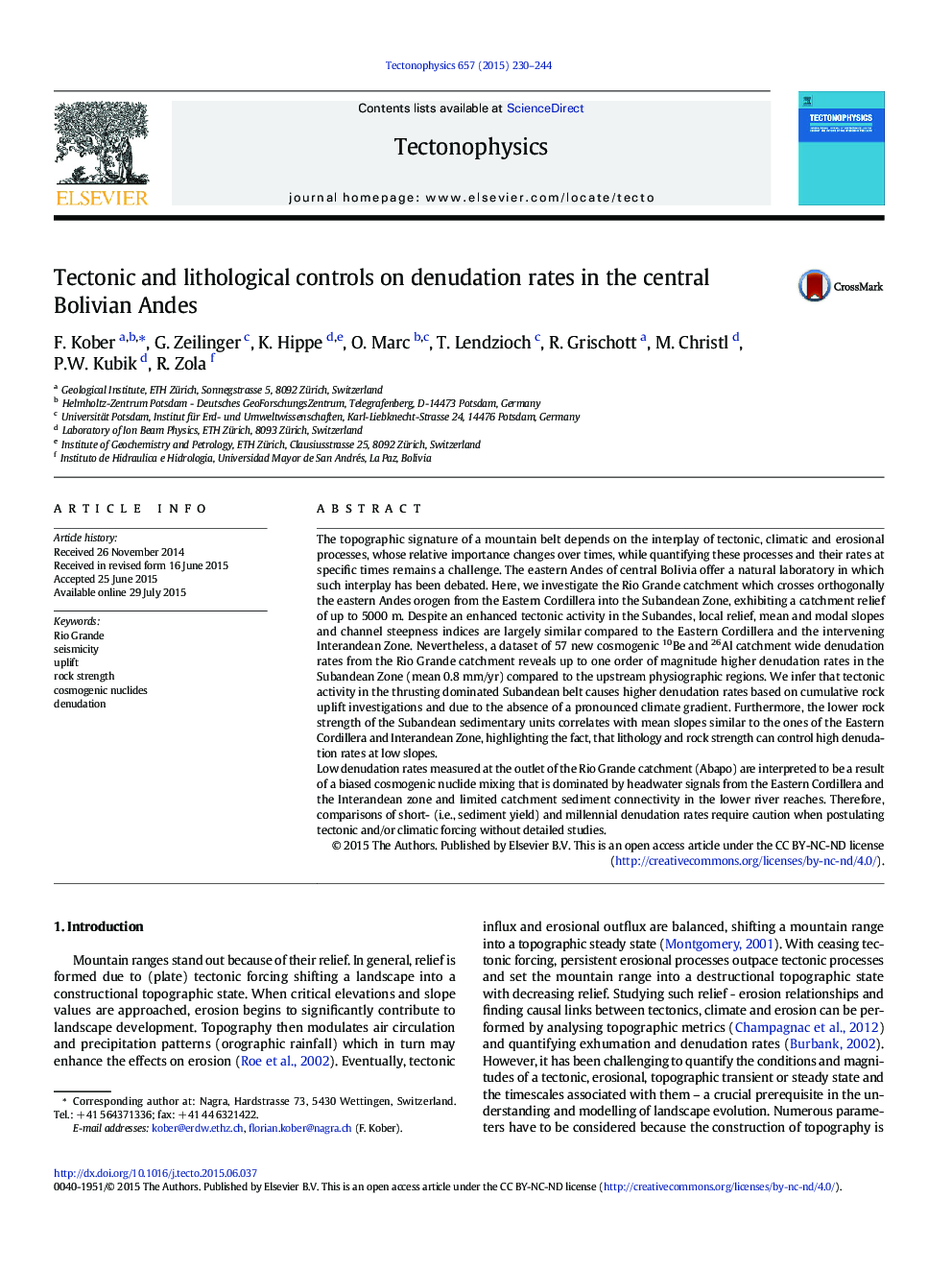| Article ID | Journal | Published Year | Pages | File Type |
|---|---|---|---|---|
| 6433642 | Tectonophysics | 2015 | 15 Pages |
â¢millennial denudation rates across the central eastern Andes are highest in Subandesâ¢common geomorphic metrics cannot explain high denudation rates in the Subandesâ¢cumulative seismic volume uplift provide best spatial match for denudation rates in Subandesâ¢lower rock strength permits higher denudation at lower slopes in Subandes
The topographic signature of a mountain belt depends on the interplay of tectonic, climatic and erosional processes, whose relative importance changes over times, while quantifying these processes and their rates at specific times remains a challenge. The eastern Andes of central Bolivia offer a natural laboratory in which such interplay has been debated. Here, we investigate the Rio Grande catchment which crosses orthogonally the eastern Andes orogen from the Eastern Cordillera into the Subandean Zone, exhibiting a catchment relief of up to 5000Â m. Despite an enhanced tectonic activity in the Subandes, local relief, mean and modal slopes and channel steepness indices are largely similar compared to the Eastern Cordillera and the intervening Interandean Zone. Nevertheless, a dataset of 57 new cosmogenic 10Be and 26Al catchment wide denudation rates from the Rio Grande catchment reveals up to one order of magnitude higher denudation rates in the Subandean Zone (mean 0.8Â mm/yr) compared to the upstream physiographic regions. We infer that tectonic activity in the thrusting dominated Subandean belt causes higher denudation rates based on cumulative rock uplift investigations and due to the absence of a pronounced climate gradient. Furthermore, the lower rock strength of the Subandean sedimentary units correlates with mean slopes similar to the ones of the Eastern Cordillera and Interandean Zone, highlighting the fact, that lithology and rock strength can control high denudation rates at low slopes.Low denudation rates measured at the outlet of the Rio Grande catchment (Abapo) are interpreted to be a result of a biased cosmogenic nuclide mixing that is dominated by headwater signals from the Eastern Cordillera and the Interandean zone and limited catchment sediment connectivity in the lower river reaches. Therefore, comparisons of short- (i.e., sediment yield) and millennial denudation rates require caution when postulating tectonic and/or climatic forcing without detailed studies.
